
Inquisitive minds and enthusiastic R+D at the office = transferable / scaleable skill set!
In writing this, we appreciate that it is rather specific to the particulars of our house and garden - the old bath, the extension, the channel, using the garden as a basin... The wider lesson, though, is that every site has its own constraints and opportunities and we need to observe and carefully plan what will work in any given location. As stated in the CIRIA SuDS Manual 2015
"Provided that drainage is considered early enough in the outline design of a new development then there is no reason why SuDS should not become the norm everywhere."
And that applies at any scale!
A Pictorial Timeline of the Rain Garden 'Design and Build'
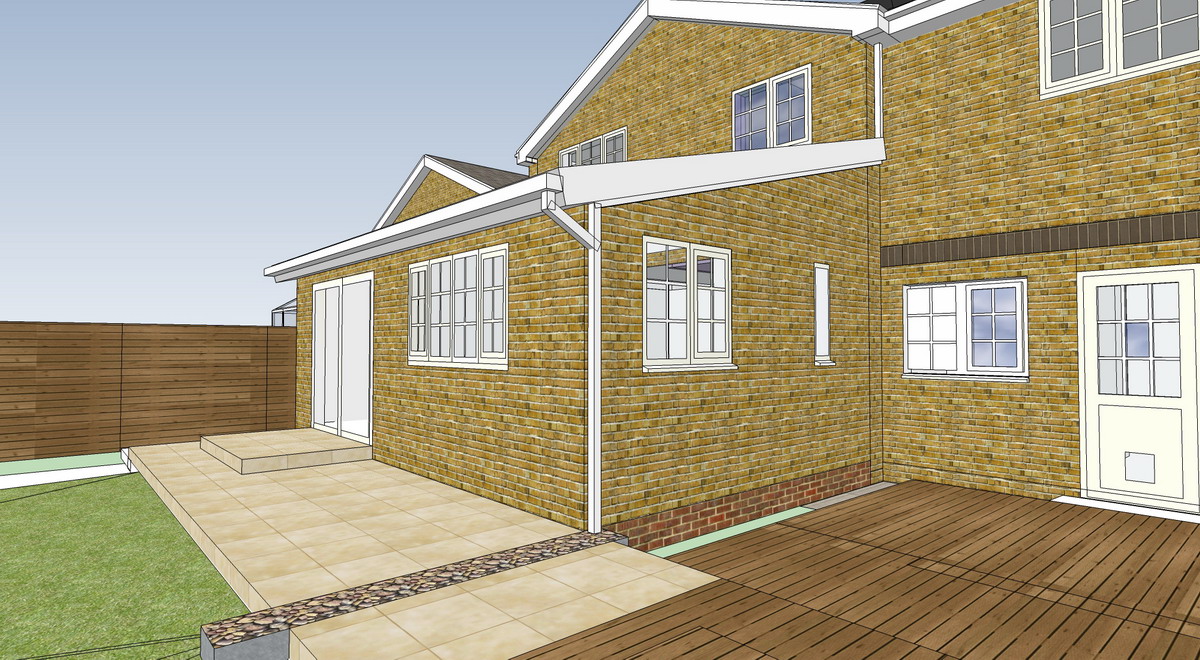
Image: 3D model of the house extension showing the proposed rain garden link
We produced basic calculations for the extension drainage to meet the council's Building Regs - not sure how many rain gardens they have seen to satisfy this requirement, but it was approved nonetheless.
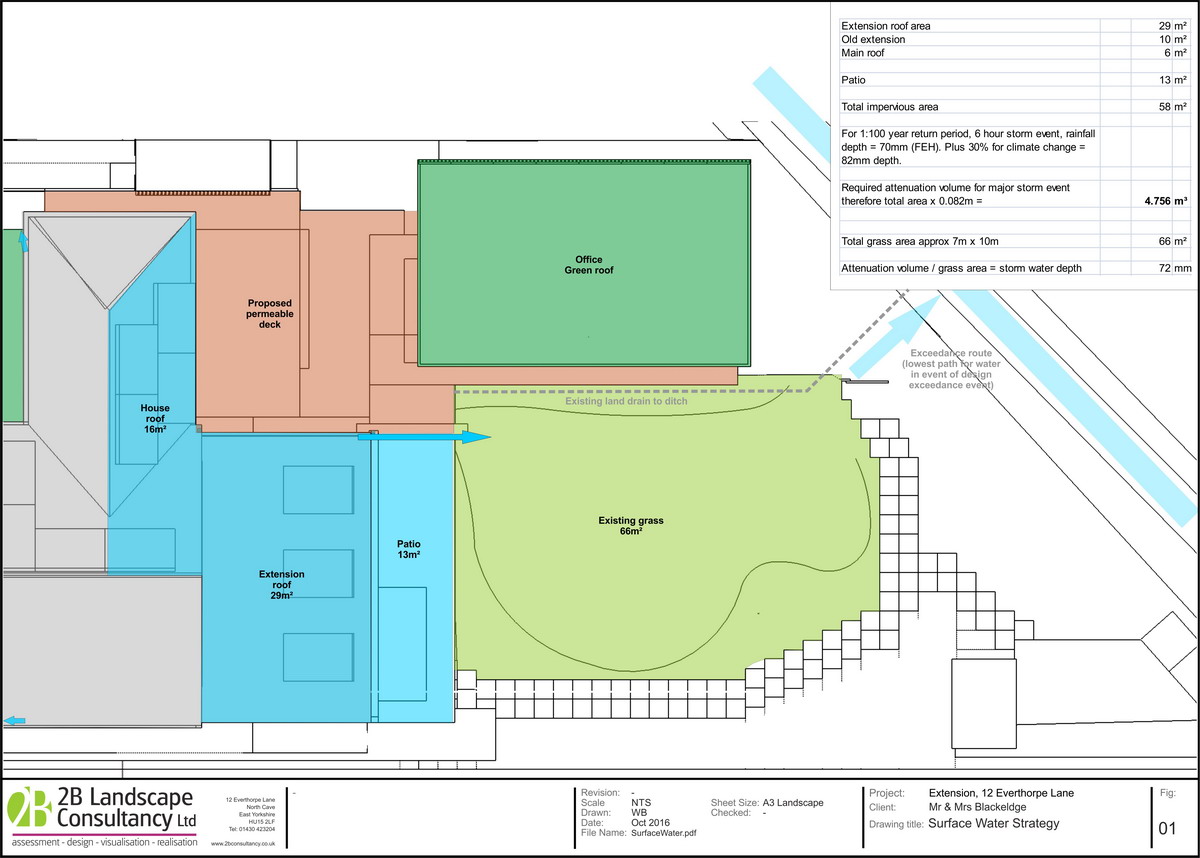
Image: Basic surface water drawing and calculations
For most of the first year, it was sufficient to allow the water to drain from the extension roof onto the lawn.
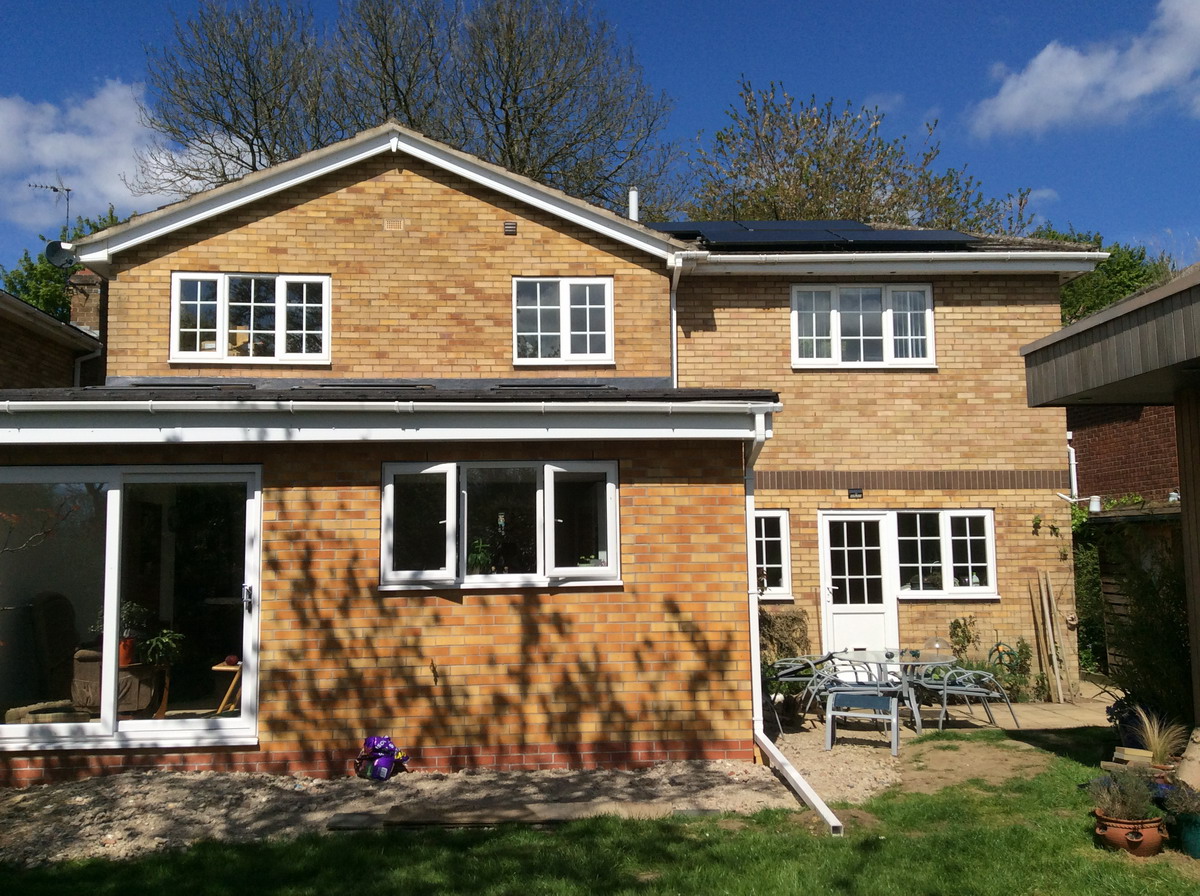
Image: Downspout from the extension drain on to the lawn - a functional but basic solution
Then we started to plan how the patio, deck and planters would look, using cutting-edge technology such as planks, bricks and plants in pots.
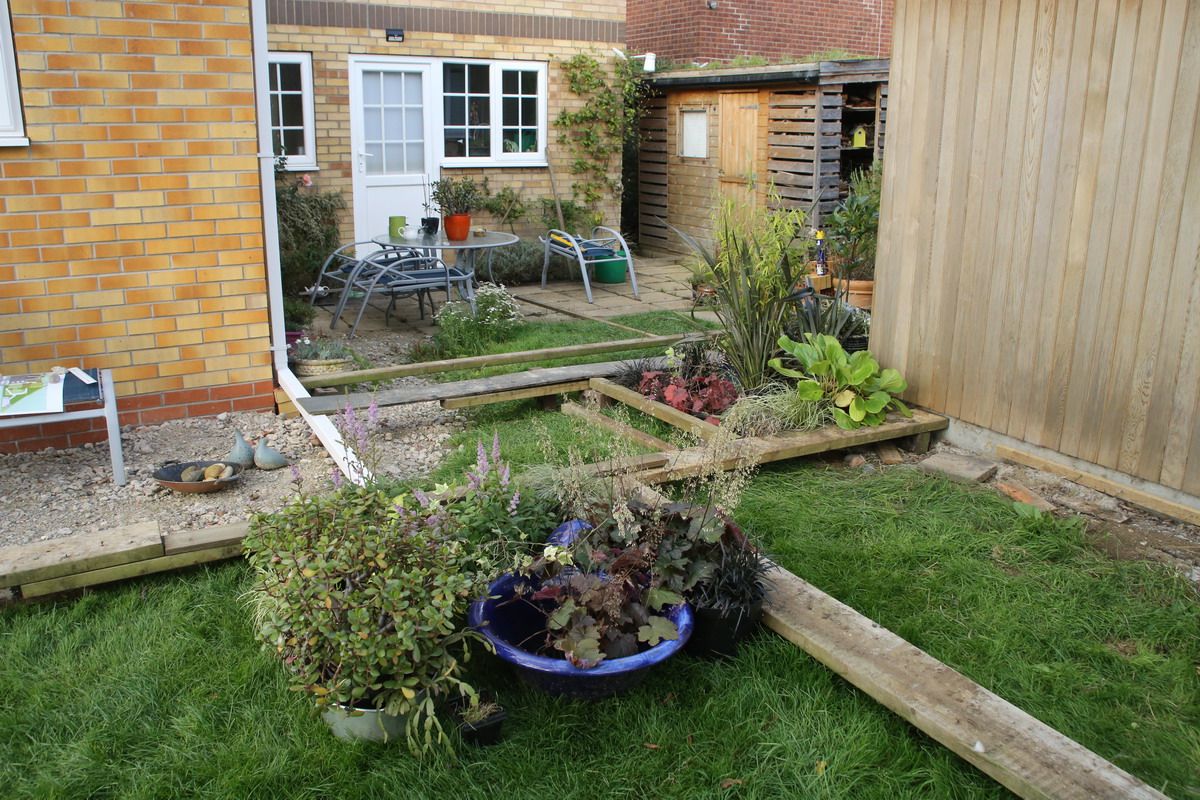
Image: Planks and plants help us to visualise the size and level of the patio and deck
And here's our key drainage feature (our old bath) sneaking into the bottom left of a photo of Jacksons fencing being erected by the lovely lads from Landmark Yorkshire.
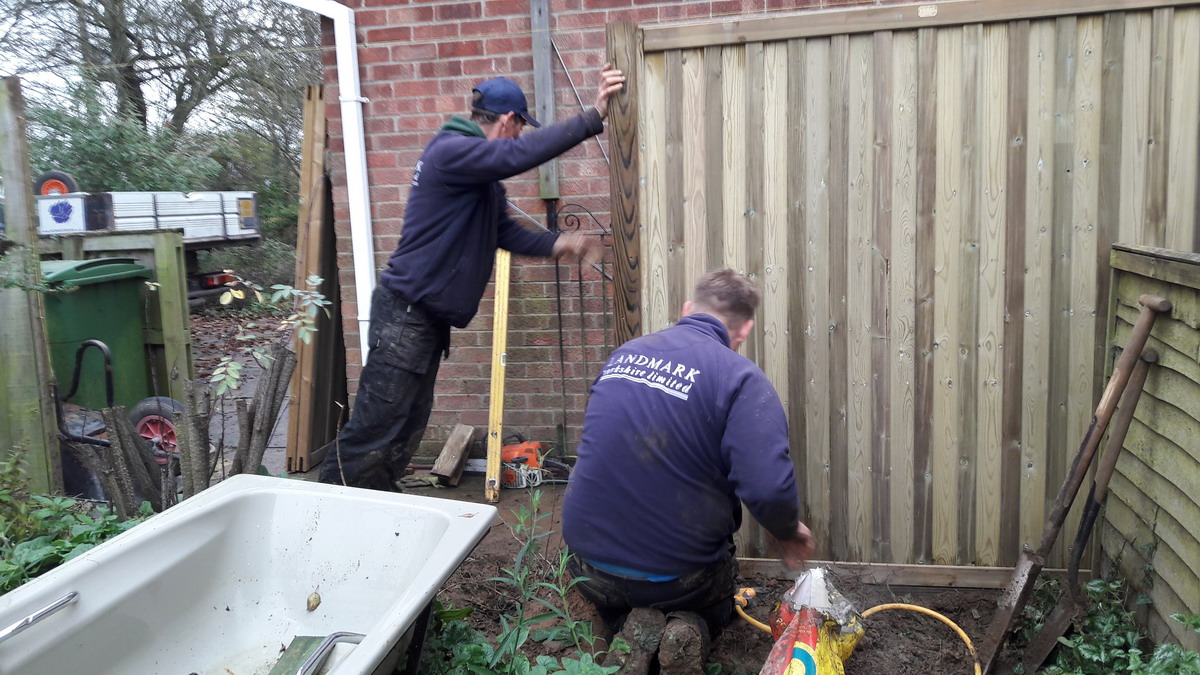
Image: Here's the bath
The design process was partly sketched, partly just trying stuff out. We think it is called "Design and Build".
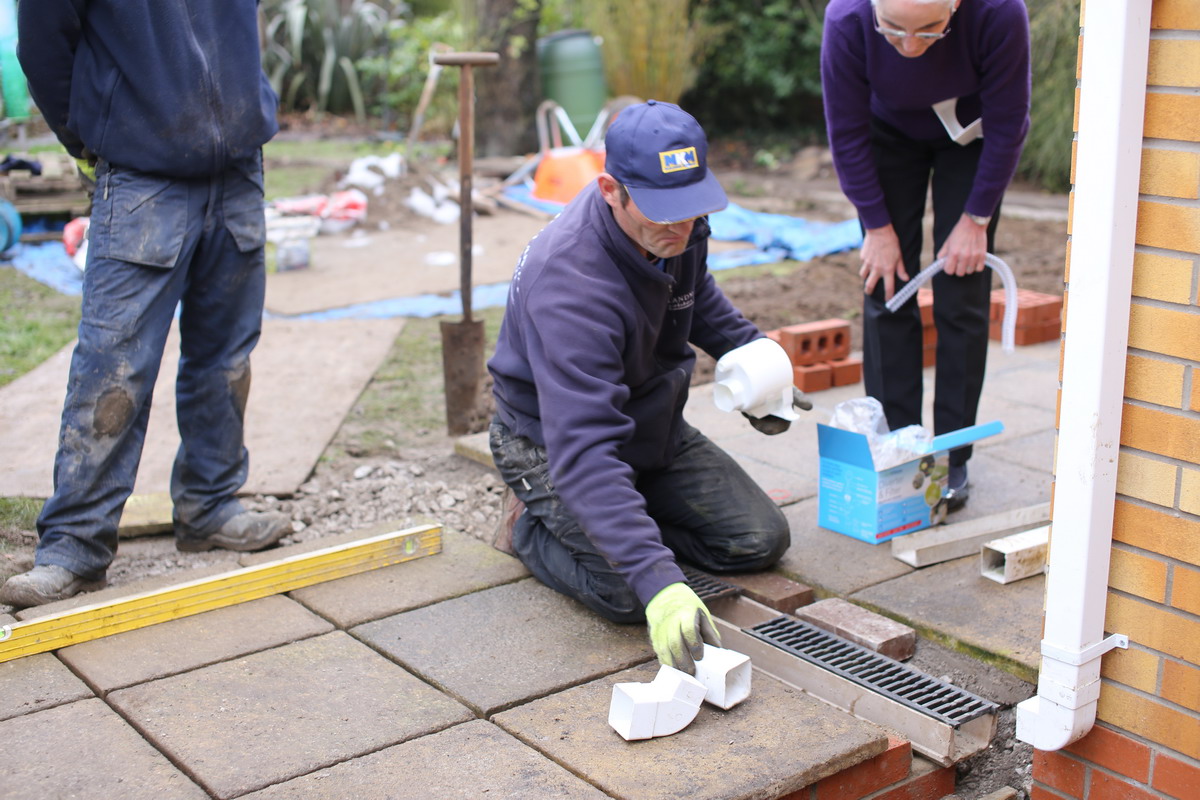
Image: Design and Build...
But, finally, the bath puts in an appearance, with no hint of her future glory, other than a glint in my eye.
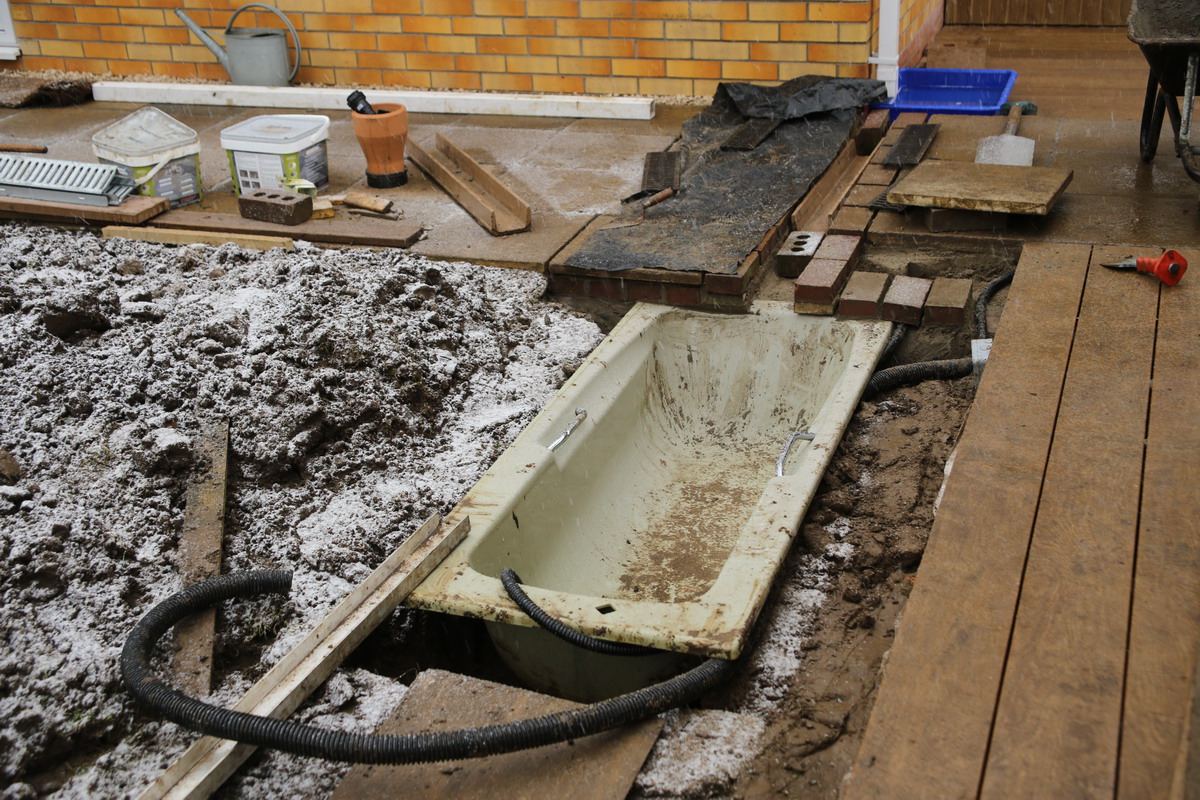
Image: The old bath stills looks like an old bath (midst-Somme) at this point - stay with us...
We had to divert the water across the top during construction, to prevent the bath rapidly filling up before we had resolved all of the ins and outs (which of course is a small scale representation of an issue that applies to many building sites, and why project planning is important).
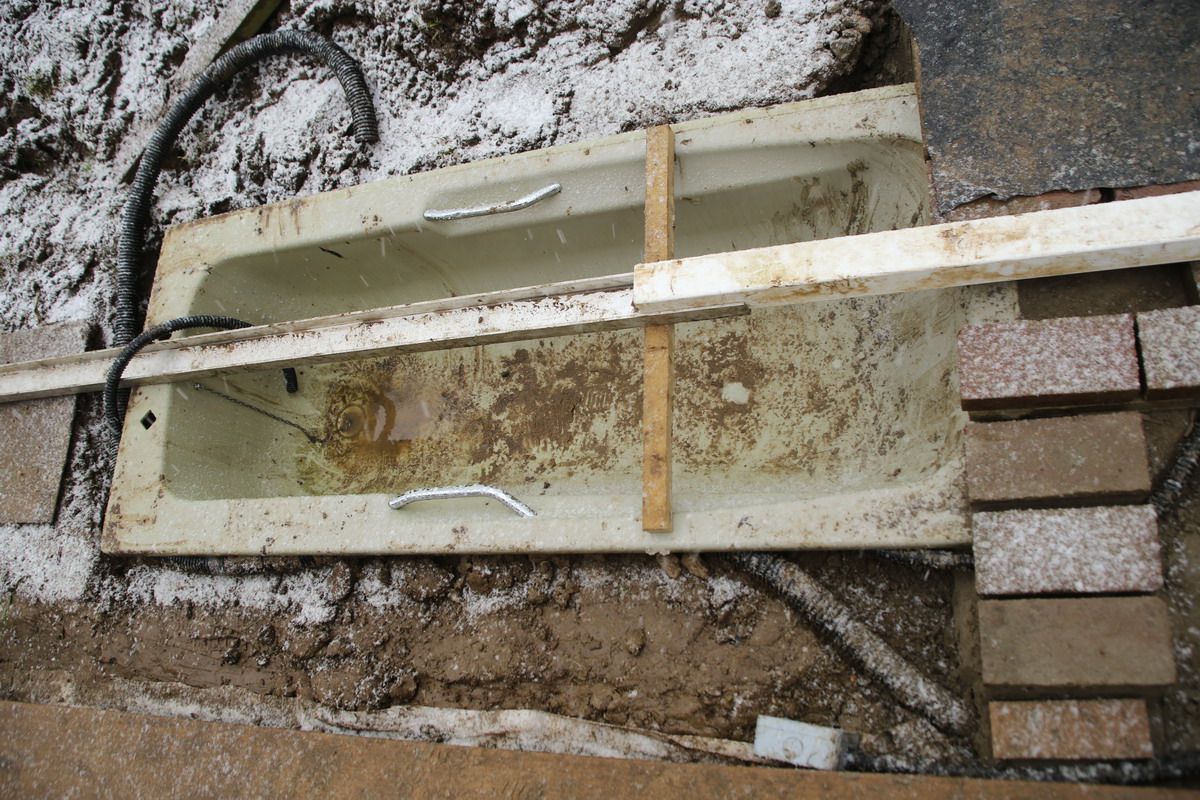
Image: Bypassing the bath
Throwing the water into makeshift channels actually gave us great confidence about the future of our rain garden - the water, which was so apparent during a storm, readily drained away and was not visible the next day. This photo marks the aesthetic low point of the design/build process.
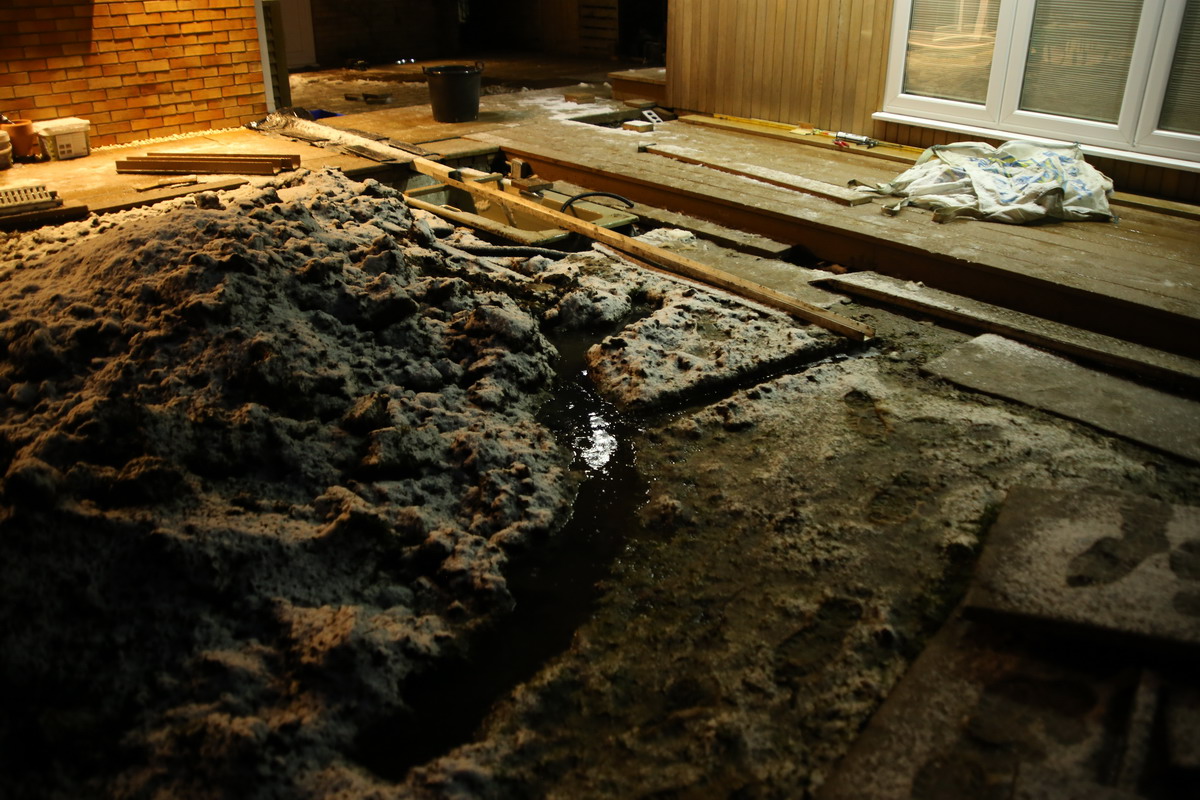
Image: A soggy sump during construction
Matt, with his background as a landscape contractor, turns up with a fabulous bit of kit, to produce perfect 45° cuts for the corners of the surround to the bath/pond. We used the same Millboard (composite timber-effect) product as we had selected for our decks.
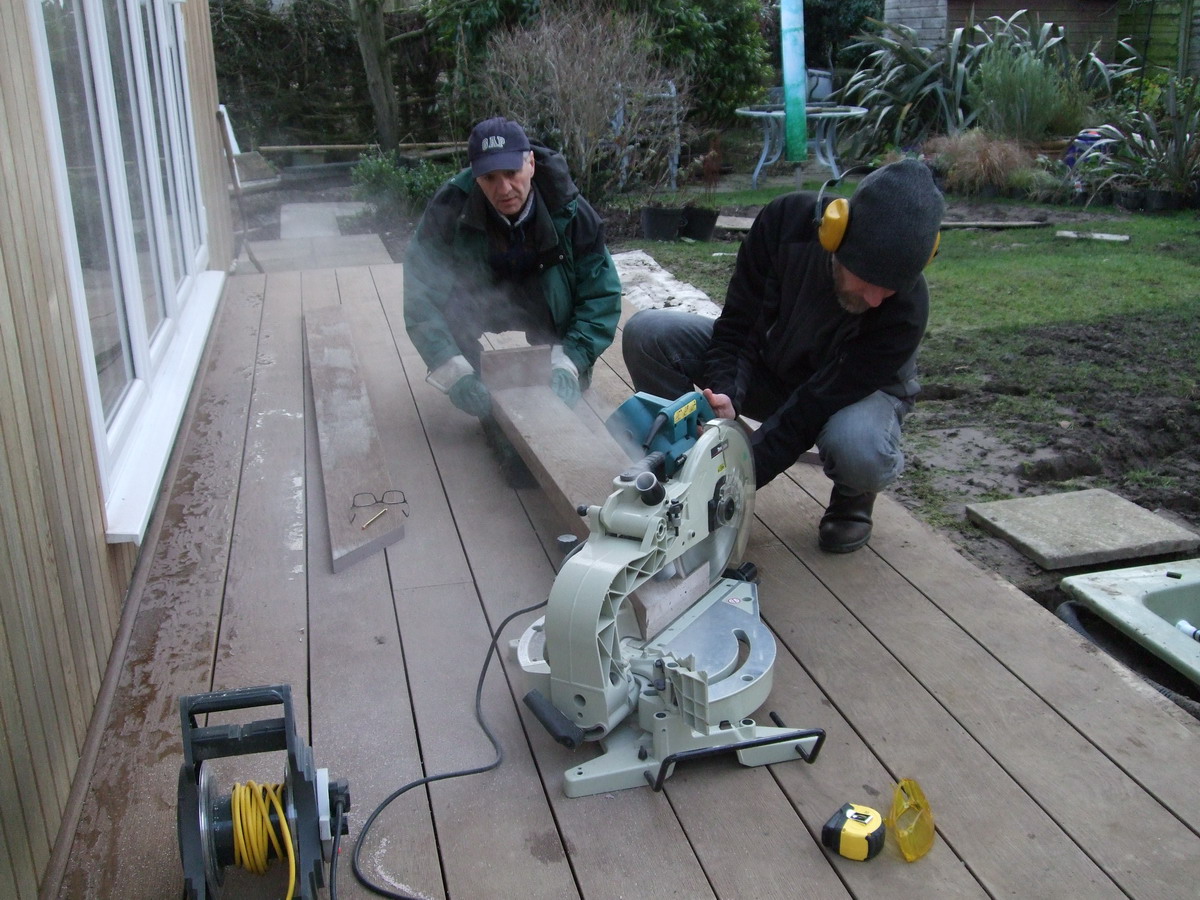
Image: Precision mitre cutting
The Ins
We realised that we would be missing an enormous trick if we only had the benefits of water splashing into our pond when it rained - so we added a re-circulating pump such that we could enjoy moving water any time we wanted. This involved some cunning routeing of a hose under the channel taking the down-pipe water across the patio.
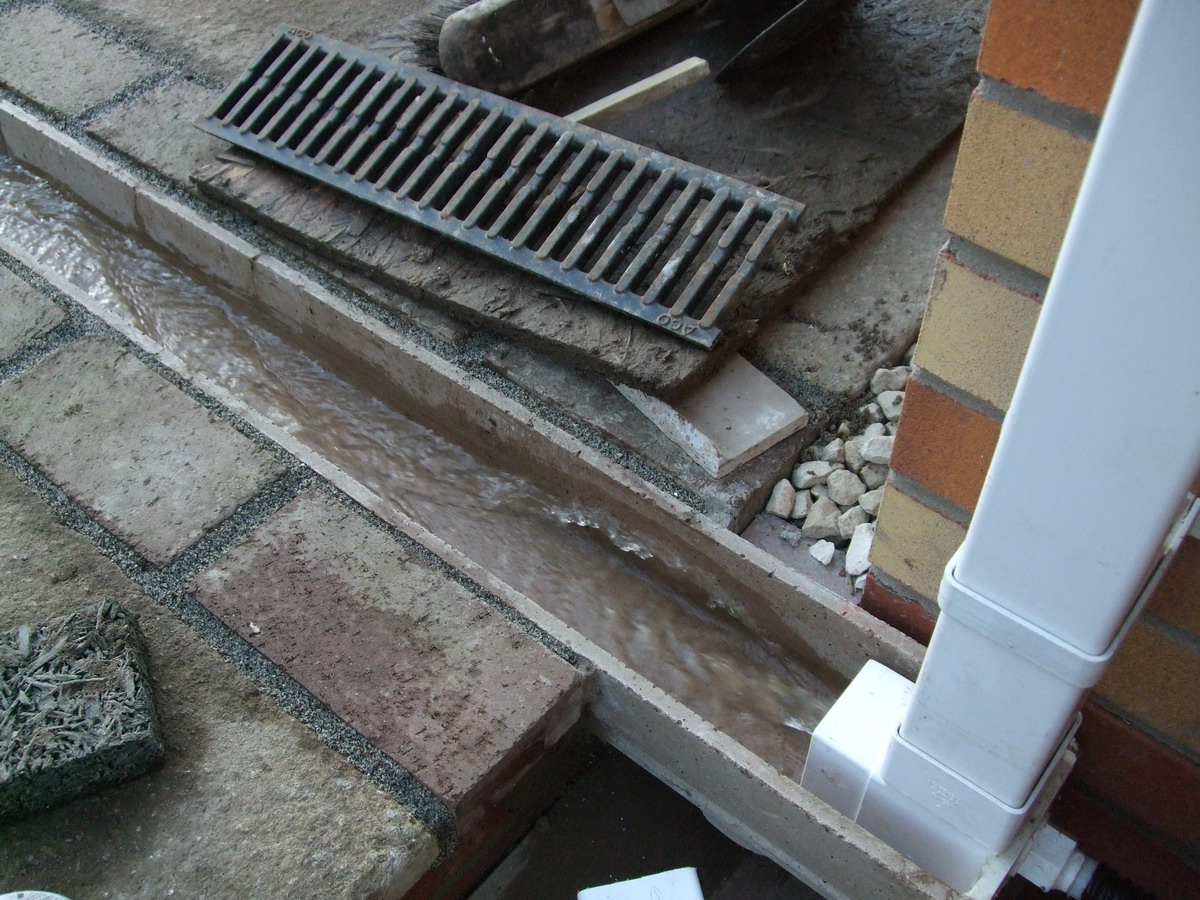
Image: The pond pump hose feeds the bottom of the rainwater downspout - two functions in one
And the Outs
We didn't just want the bath overflowing in a typical storm, and found a way to provide a subtle outflow for most circumstances. Exploiting the tap holes in the bath, and adding a few more drilled holes for good measure, we provided a route to a Yorkshire-based drainage product we have long been fans of, and have used on our two main house/office green roofs - EnviroFlow.

Image: Setting the maximum water level with the bath overflow holes
We used Enviroflow directly under the end of the bath, and running towards the lowest point of the rain garden - in this photo, it is the point marked by the white stick and plant pot. This was designed to ensure a clear path for water from the pond to the centre of the rain garden. In effect the bath/pond acts as a stepping stone to take the rain water away from the patio before it infiltrates into the main lawn beyond. The pond could overflow in a serious storm, but for most normal events, we don't see any water overflow.
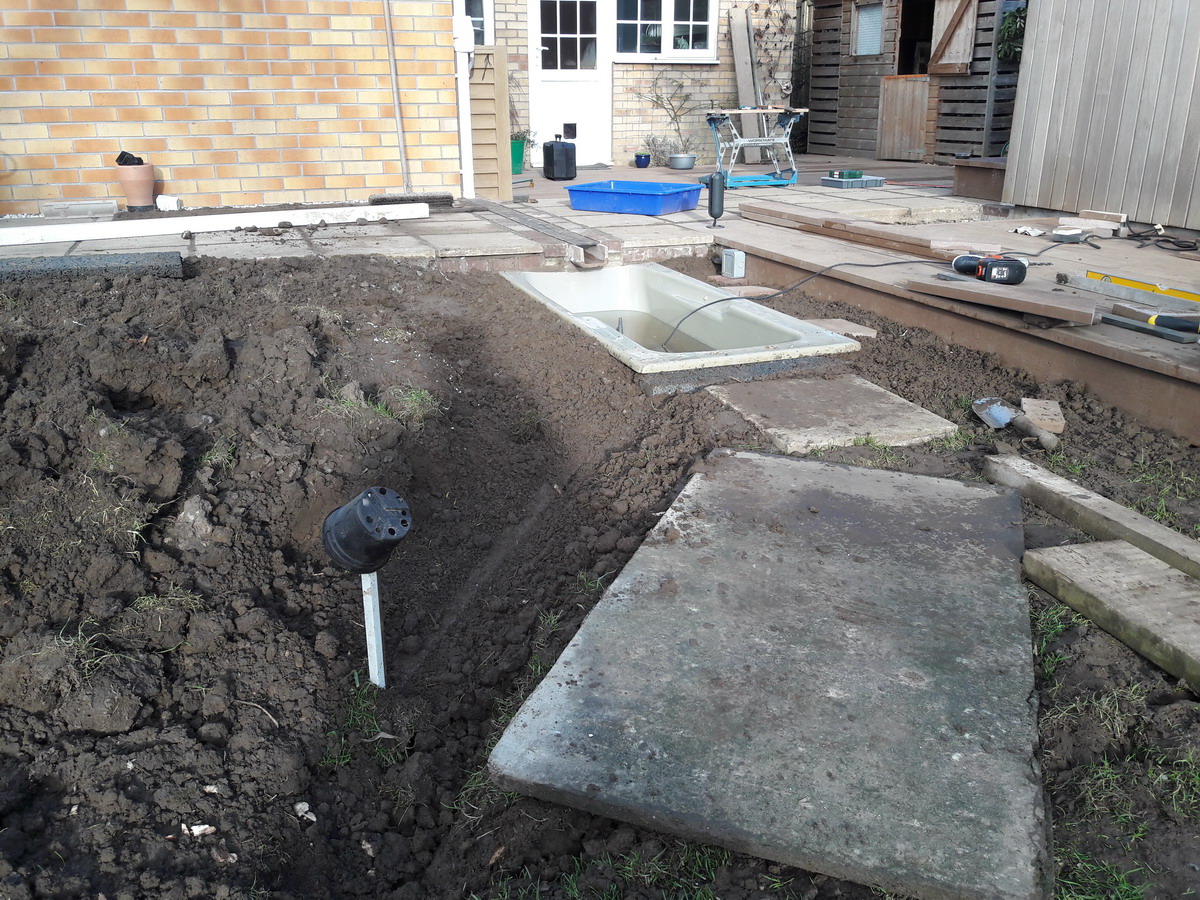
Image: Enviroflow provides a route into the attenuation/infiltration basin
Here's the decking trim on top of the bath - to make it look less like a bath! The water is carried from the downspout in a basic fibre-reinforced concrete channel and the grating on top is a workmanlike Aco cast iron grid with a simple wave pattern on top.
We added a bubble fountain above the pump, as we know from past experience that birds love it.
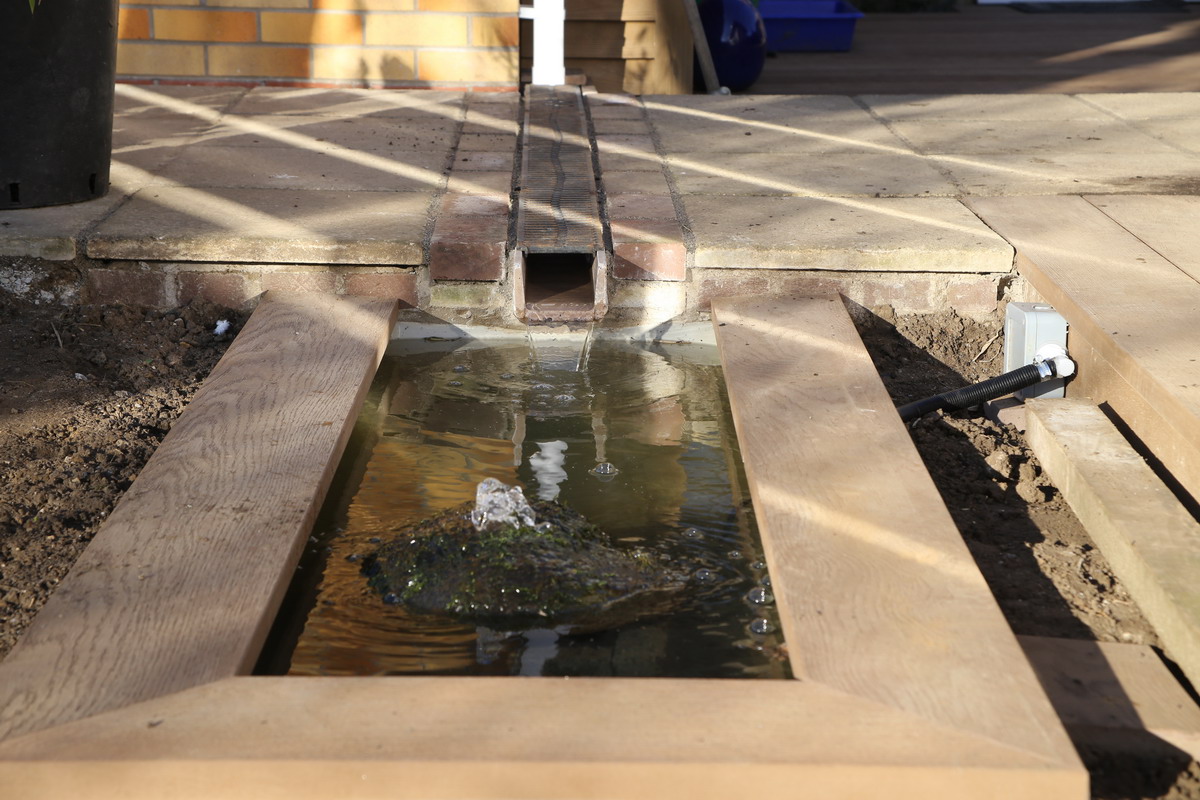
Image: Hardworks complete
We started to select and place plants in Spring 2018, including marginals in and below the pond and a selection of herbaceous plants and grasses. Spot the duck! (Hint, it's yellow)
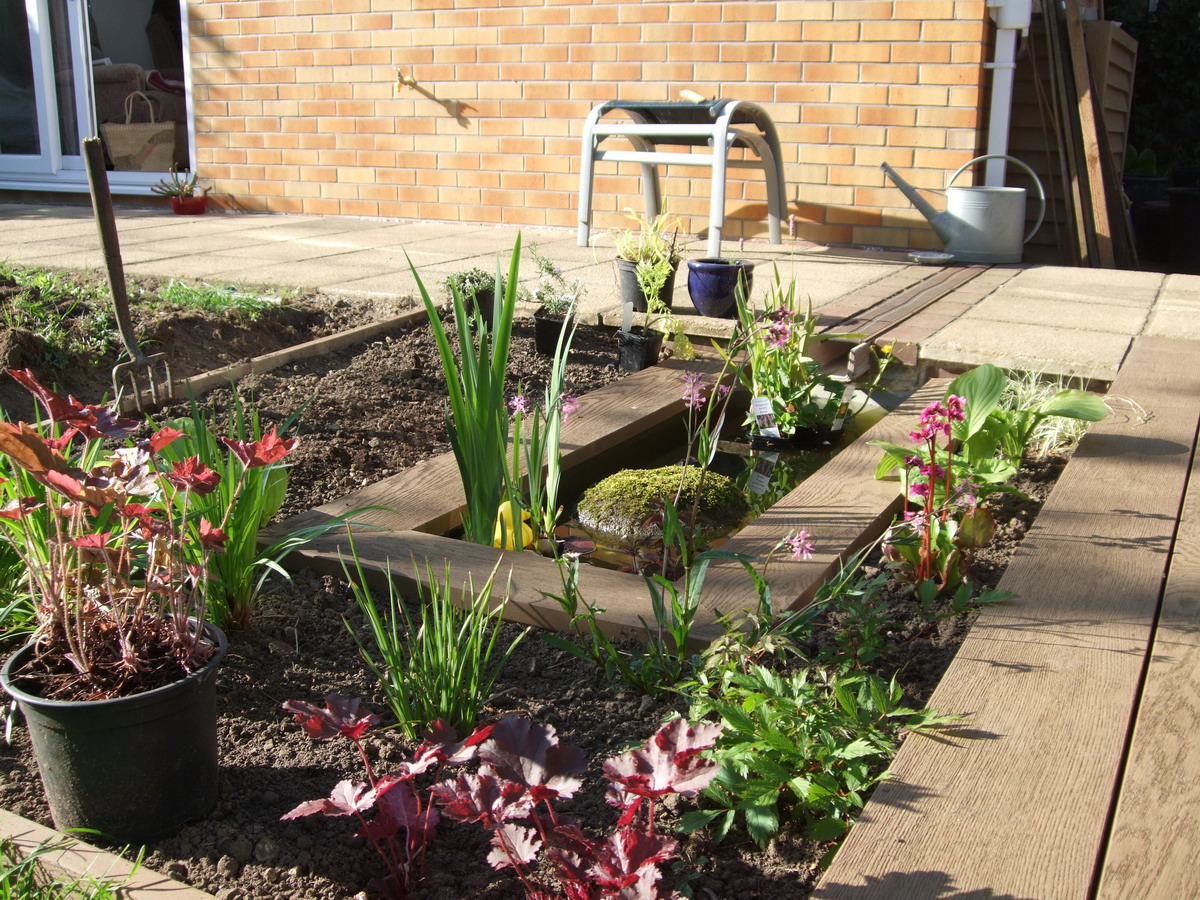
Image: Starting to plant around the pond
In the summer, we checked levels around the garden to ensure that our rain garden would be enclosed where we needed it to be and that we had an exceedance route (top left of the photo) in the event of a really serious storm. Given the degree of ready infiltration we have seen so far, we may never see our attenuation basin full and overflowing via its spillway, but, as with all SuDS, it is essential to include "exceedance" as part of the design - who knows what the climate will throw at us in years to come. The dogs don't seem overly concerned, though.
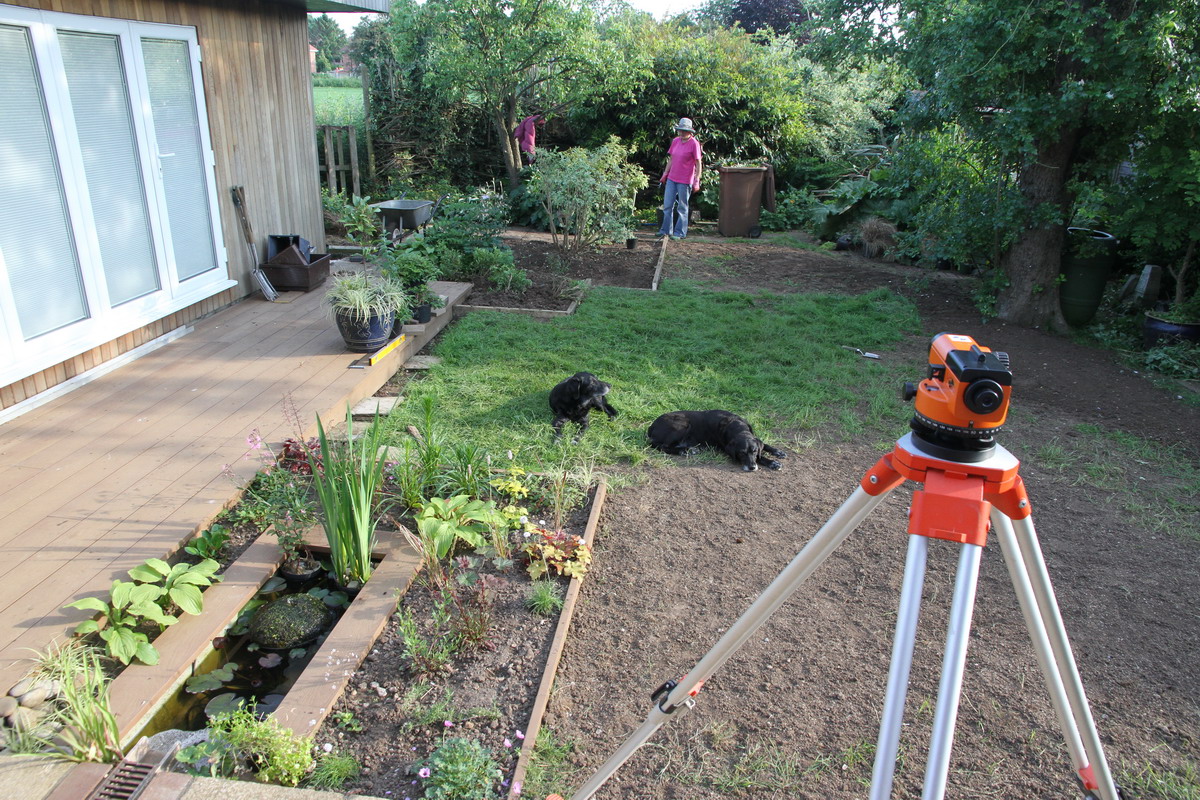
Image: Checking levels
Finally, in the words of Stevie Wonder, isn't she lovely?
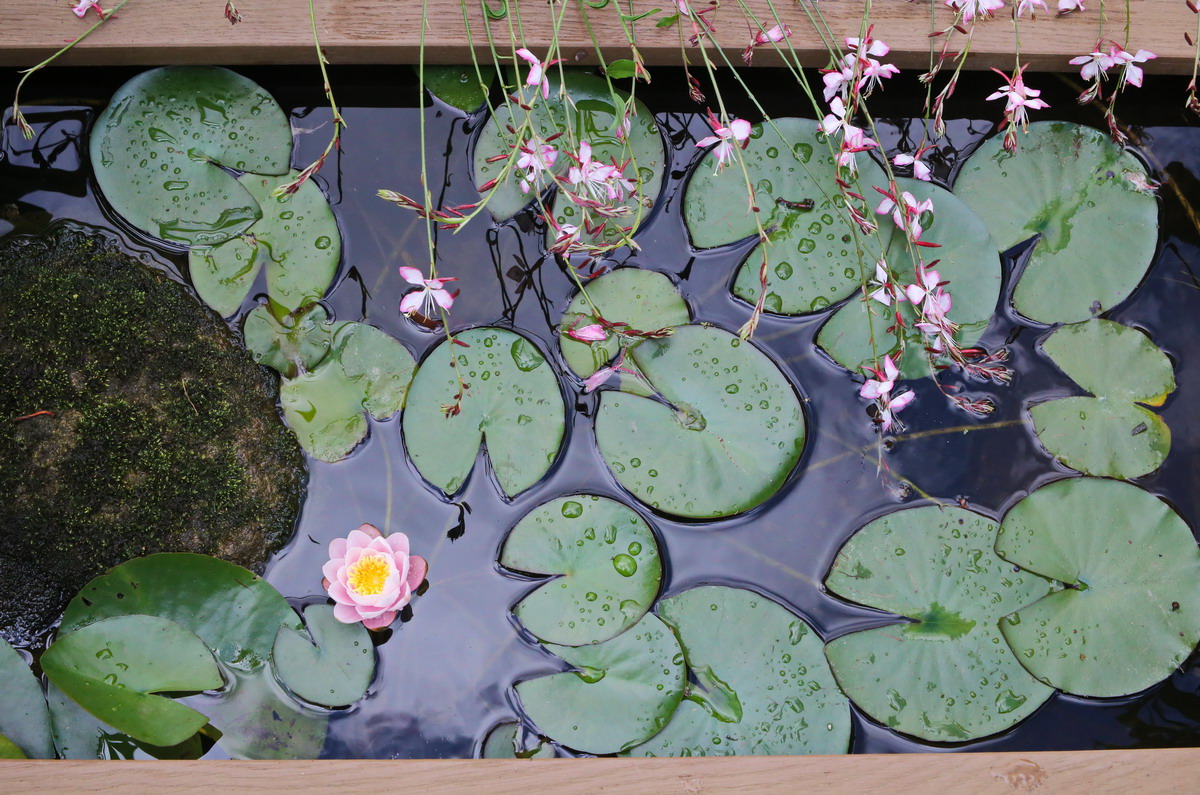
Image: Water lilies and Gaura 'Rosy Jane'
A future blog will cover the whole house / office water strategy - four green roofs now, four water butts, a hydration channel at the front of the house, and of course, this rain garden at the rear. If you want to be first to get notified when we write it, please follow the blog by signing up to our newsletter at the bottom of the page!
By Elizabeth Blackledge CMLI